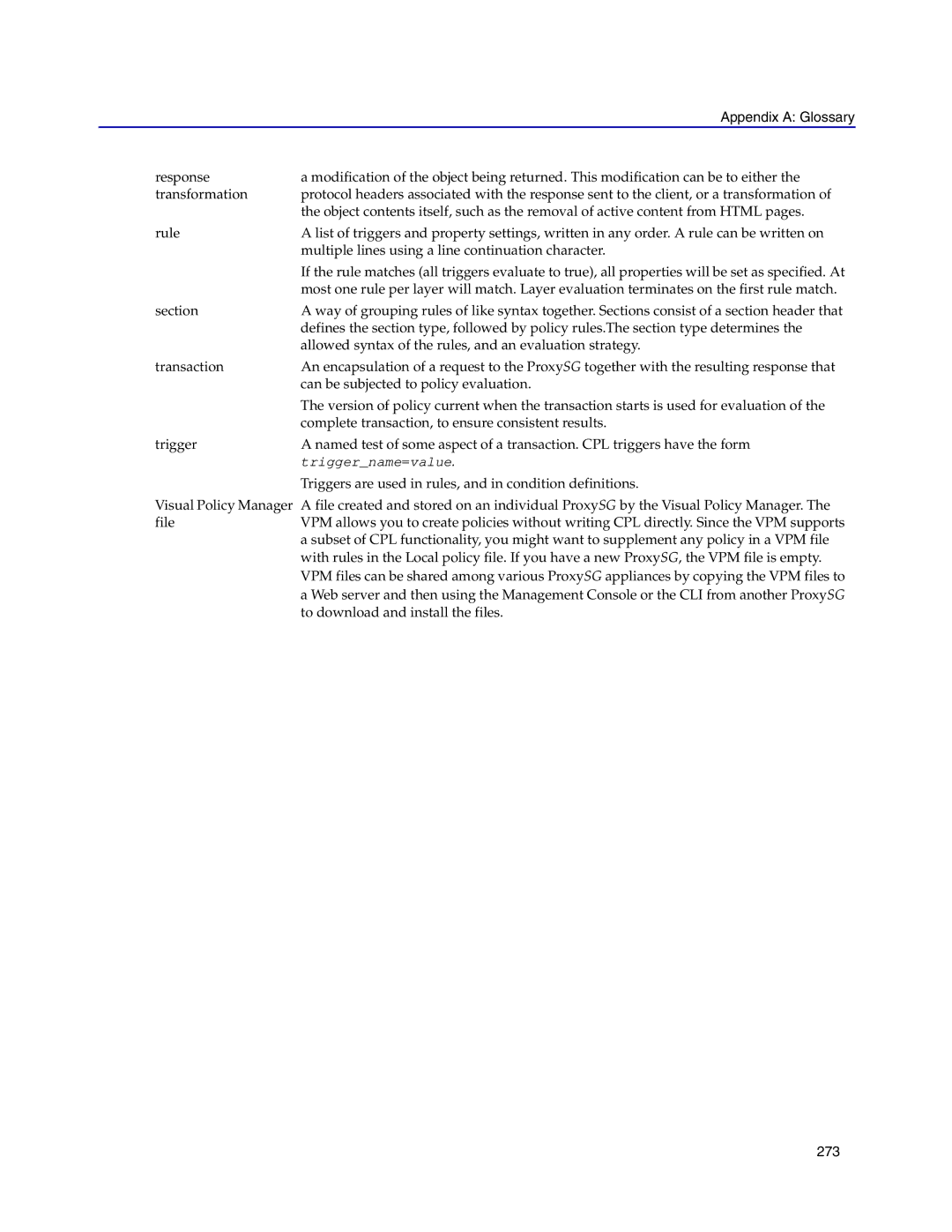| Appendix A: Glossary |
response | a modification of the object being returned. This modification can be to either the |
transformation | protocol headers associated with the response sent to the client, or a transformation of |
| the object contents itself, such as the removal of active content from HTML pages. |
rule | A list of triggers and property settings, written in any order. A rule can be written on |
| multiple lines using a line continuation character. |
| If the rule matches (all triggers evaluate to true), all properties will be set as specified. At |
| most one rule per layer will match. Layer evaluation terminates on the first rule match. |
section | A way of grouping rules of like syntax together. Sections consist of a section header that |
| defines the section type, followed by policy rules.The section type determines the |
| allowed syntax of the rules, and an evaluation strategy. |
transaction | An encapsulation of a request to the ProxySG together with the resulting response that |
| can be subjected to policy evaluation. |
| The version of policy current when the transaction starts is used for evaluation of the |
| complete transaction, to ensure consistent results. |
trigger | A named test of some aspect of a transaction. CPL triggers have the form |
| trigger_name=value. |
| Triggers are used in rules, and in condition definitions. |
Visual Policy Manager A file created and stored on an individual ProxySG by the Visual Policy Manager. The
fileVPM allows you to create policies without writing CPL directly. Since the VPM supports a subset of CPL functionality, you might want to supplement any policy in a VPM file with rules in the Local policy file. If you have a new ProxySG, the VPM file is empty. VPM files can be shared among various ProxySG appliances by copying the VPM files to a Web server and then using the Management Console or the CLI from another ProxySG to download and install the files.
